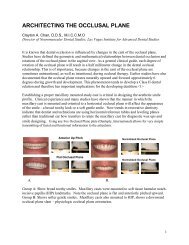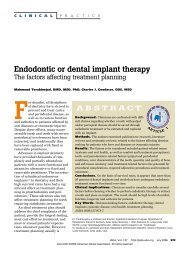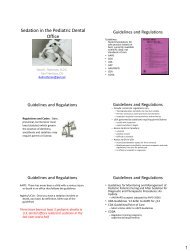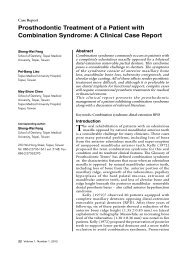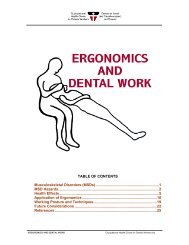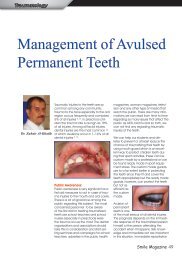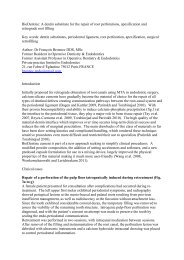Perio_III
Perio_III
Perio_III
Create successful ePaper yourself
Turn your PDF publications into a flip-book with our unique Google optimized e-Paper software.
<strong>Perio</strong>dontics <strong>III</strong> Summary Notes Enoch Ng<br />
<strong>Perio</strong> Supportive Therapy<br />
- Purpose of <strong>Perio</strong> Therapy – increase longevity of the person’s natural dentition by preserving supporting<br />
structures of the teeth<br />
- Maintenance and Supportive Therapy – act of continually caring for and preserving the dentition in health and<br />
function<br />
Objectives<br />
- Early recognition of the disease<br />
- Prevention of disease recurrence<br />
- Prevention of further disease advancement<br />
Rational<br />
- Non-surgical therapy (phase I) re-evaluation <br />
perio surgery (phase II) restorative therapy<br />
(Phase <strong>III</strong>) maintenance (phase IV)<br />
o If you code for 4910 (perio recall), be sure<br />
you include WHY so insurance will cover<br />
o <strong>Perio</strong> recall (4910) is NOT a prophy<br />
Major Steps<br />
- Update medical, dental, social history<br />
- Detailed clinical and radiographic examinations<br />
o If you cannot see the bone level in standard bitewings, take vertical bitewings to get bone level<br />
o No pocketing does NOT mean there is no disease – recession is possible<br />
- Determining diagnosis and prognosis<br />
- Review oral hygiene and compliance<br />
- Perform supra and subgingival instrumentation<br />
Maintenance<br />
- Look for mobility, increase probing depths, recession, bleeding, widened PDL, bone loss (Radiographic)<br />
- This is basically a mini exam, to compare findings over time<br />
- Once a perio patient, always a perio patient<br />
o Must use 4910, can NEVER go back to prophy<br />
o <strong>Perio</strong>dontitis is a chronic, lifelong disease<br />
- Without maintenance, therapy is useless<br />
o Limited therapy = instrumentation only, no surgery<br />
- Patient compliance is not reliable<br />
o 17% compliance<br />
o 49% erratic<br />
o 34% none



